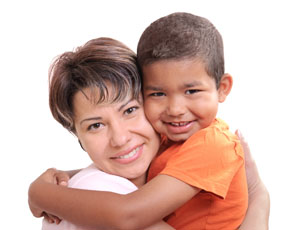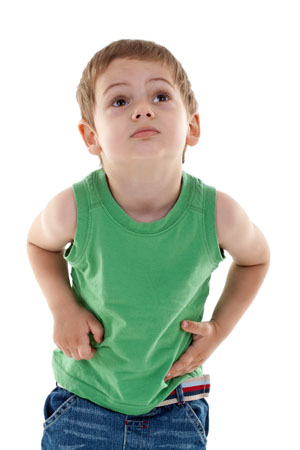So, you’ve decided to officially start potty training! This is an exciting time for you and your child, but it can also feel quite daunting.
There are many methods and philosophies out there on how to potty train, and they range from promising a diaper-free baby in a few days to letting the process be completely child-led, from advocating for pull-ups, to insisting that going cold-turkey and using only underwear is the only way to go.
So how do you decide? The truth is, the potty training method (or methods!) you ultimately use will be very individualized for you and your family. This means you may try one method, discard it, and move on to another. It means you may find that you train your oldest child in one way and end up needing a completely different approach for the next sibling. This is all perfectly fine!
What we offer here is a range of suggestions for you to consider and to help you get started.
1) Decide where you would like your child to use the potty.
 A portable potty: Parents may choose this for its portability. You can place one in the bathroom right next to the big potty. You can even put one or more around the house so the minute a child gets the urge to go, she has a potty nearby. These potties do take extra cleaning after each use.
A portable potty: Parents may choose this for its portability. You can place one in the bathroom right next to the big potty. You can even put one or more around the house so the minute a child gets the urge to go, she has a potty nearby. These potties do take extra cleaning after each use.
A “potty seat”: Some prefer the small seat that is placed over the toilet seat, creating a more child-sized fit. These seats generally are easy for an adult to remove, making for quick transitions back and forth. There are also ones that attach to so it can be flipped up and down like an actual toilet seat. If you choose this method, be sure to have a stool handy for little feet to rest on while going. Children cannot control the muscles involved in elimination as well if they don’t have a place to put their feet down.
 The actual potty: Some families skip the add-ons and just use the actual toilet. While there is nothing at all wrong with this, just keep in mind that some children may feel nervous about that big round seat with the water under it. You also want to use the stool for little feet for the same reason given above.
The actual potty: Some families skip the add-ons and just use the actual toilet. While there is nothing at all wrong with this, just keep in mind that some children may feel nervous about that big round seat with the water under it. You also want to use the stool for little feet for the same reason given above.
Sit or stand: For the little boys – do you start with them sitting and move to standing or just start right out with letting them go standing up? Ultimately it is up to the individual. However, we suggest trying the sitting first so the child can get used to the whole process. Also, wiggly little boys and standing are not always the best combination at first. They tend to get easily distracted and miss… a lot! Decide what’s right for you based on the temperament and activity level of your child.
2) Decide how you will encourage and celebrate
Prizes: Many parents swear by small tangible rewards. These can range from things like M&Ms, to stickers, to small items like racecars or some other treasured object. You can also offer one item, like a single M&M for pee, and two or three of the same item for poops. Other families let children work towards a bigger reward by filling in a chart or trading in several small rewards for a bigger one.
 Non-tangibles: Some families prefer not to use tangible prizes, and some children just don’t need them. Whatever the case, be sure to celebrate your child’s potty successes with praise, high-fives, hugs, etc. Help your child feel very proud of the big boy or girl that he or she is quickly becoming. If your child is struggling or stalling over a step in potty training and has a breakthrough, make sure you celebrate big!
Non-tangibles: Some families prefer not to use tangible prizes, and some children just don’t need them. Whatever the case, be sure to celebrate your child’s potty successes with praise, high-fives, hugs, etc. Help your child feel very proud of the big boy or girl that he or she is quickly becoming. If your child is struggling or stalling over a step in potty training and has a breakthrough, make sure you celebrate big!
3) Decide on your timing – when will you ask your child to go?
By the clock: Helpful items like a potty watch timer helps a child to remember to go at set time intervals. You might also use a kitchen timer or check in every hour or so, gradually increasing the time between visits to try the potty.
By routine: Just before or after naps or meals are good routine times to go potty. If your child wakes up dry, that’s a good sign it might be time to set her on the potty to try. Don’t forget to go potty just before rushing out the door, too!
By the child: Kids often have pretty distinct signals to let you know when they are ready to go or when they are actively going. Look for tell-tale body language, wiggles, and facial expressions for cues. Your child may also stop and gaze out to space, squat, or even hide. These are all quite normal behaviors, and it’s a good time to try to use the potty! My son used to sing to himself in his crib before going down for a nap. When his singing turned high-pitched I knew he had filled his diaper and it was time to take a break from the attempted nap and clean him up.
You may need to try a combination of these timing methods to find out what works best for you.
4) Decide on what to wear
Pull-ups: Pull-ups work great for some kids! They offer the feel and ease of underwear, but the protection of a diaper. Kids can feel a sense of independence when they can run to the potty and handle the pull-ups themselves. Other families find pull-ups an intermediate step they don’t necessarily need.
Underwear: Sometimes going “cold turkey” and dealing with the messes is a preferred method. Children often dislike the sensation of wet underwear and it can help them learn to cue into their bodies just before the accident. On the other hand, wet underwear and clothes may be a stressor to some, and are neither carpet nor furniture friendly. If this isn’t a concern for you, using underwear might be a good choice.
Of course, you can always do a mix of pull-ups and underwear, too!
Clothes: Overalls and footy pajamas are adorable, but not the easiest thing to be wearing when the need to go strikes a child who is just learning to balance getting to the potty on time and to manipulate clothes too. Try to dress your child in soft clothes with elastic waists, and minimal buttons or snaps. If you are in a warm season or private place, pants-free is an option for some as well. Lots of parents try potty training in the summer for just this reason.
5) Make your potty training plan.
So, you’ll need to make some initial decisions on how you will start potty training. It’s a great idea to seek advice from pediatricians, friends and family, and trusted parenting resources. Think about what all these people have to say, and then embark on what feels right for you. Again, it’s okay to switch it up, try one thing, and move on to another. Make sure you give Plan A adequate time to work before moving on to Plan B – don’t rush!
The most important thing is that you stay positive and encouraging throughout the process. If at any point you or your child feel potty training stress, it’s okay to back off a little and start again in a bit. In the end, your child still ends up potty trained, and that is, of course, the goal.

Great article! Though our potty training days are (happily) behind us, I definitely remember the angst that went along with figuring out what will work for my last child. One thing I discovered is that what worked for my oldest wasn’t necessarily going to work for my “baby.” I sure wish we had this blog (with wonderful articles like yours) and the “Potty Time” program when we were going through it. The combo is definitely going to be a big help for lots of lucky families! 🙂
Thank you, Amanda! You make a great point about children from within the same family needing different approaches. Kids have a way of showing us what they need. 🙂